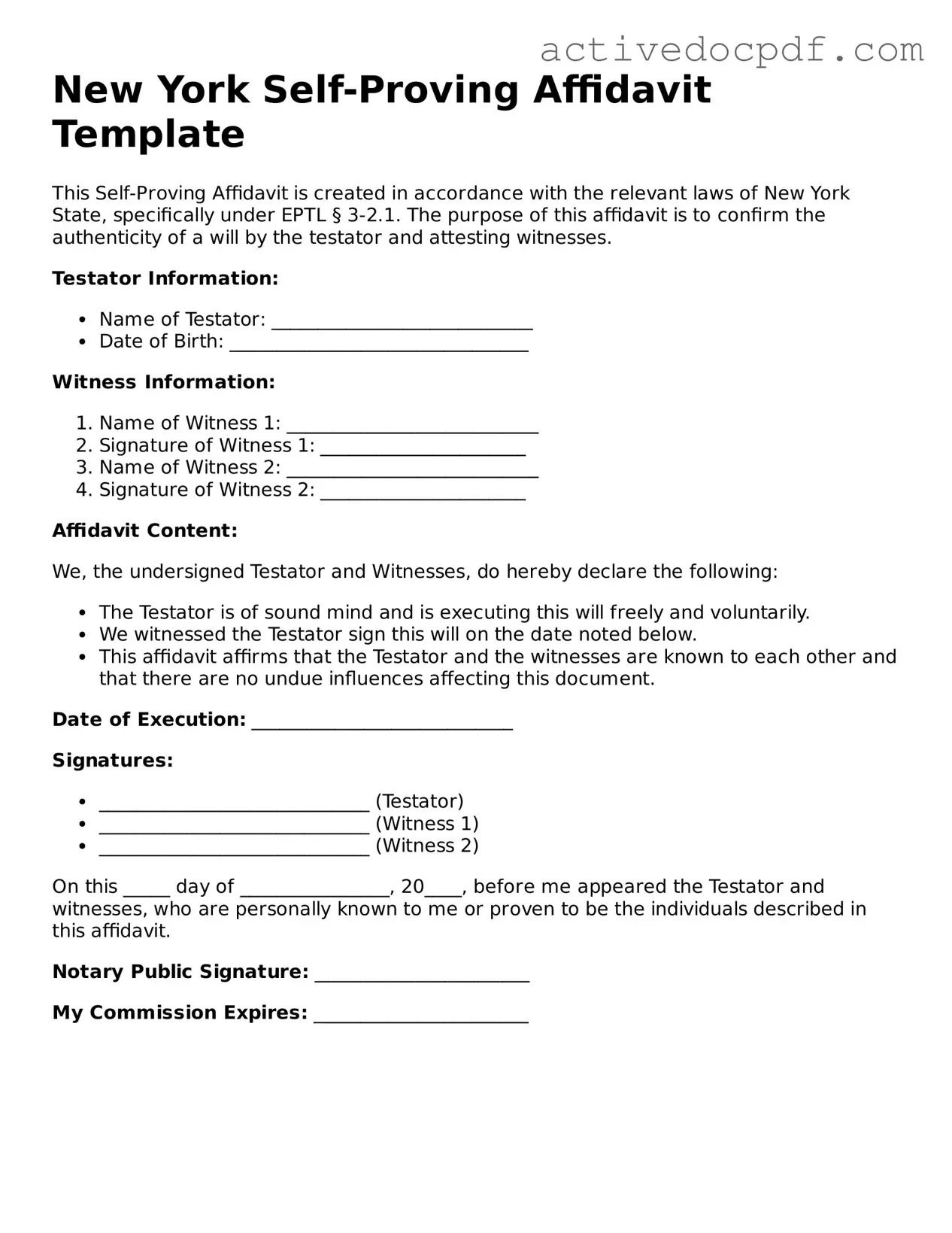Guide to Filling Out New York Self-Proving Affidavit
After completing the New York Self-Proving Affidavit form, you will need to ensure that it is properly signed and witnessed. This step is crucial for the validity of the document, as it may be required during probate proceedings. Follow the steps below to accurately fill out the form.
- Begin by locating the form. You can find the New York Self-Proving Affidavit form online or at a local legal office.
- At the top of the form, enter the name of the deceased individual whose will is being probated.
- Next, fill in the date on which the will was executed. This is typically found on the first page of the will.
- Provide the names and addresses of the witnesses who signed the will. Ensure that you include all required information for each witness.
- In the designated section, write a statement affirming that the testator (the person who made the will) signed the will in the presence of the witnesses.
- Each witness must then sign the affidavit in the appropriate space provided. They should also print their names and provide their addresses.
- Finally, make sure that the affidavit is notarized. A notary public will need to witness the signatures and affix their seal to the document.
Once you have completed these steps, review the form to ensure all information is accurate and legible. After that, you can proceed with the next steps in the probate process.
